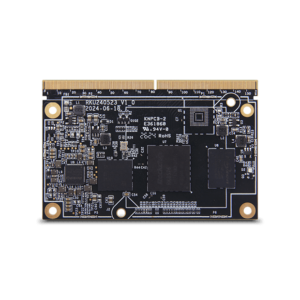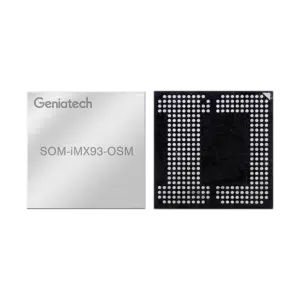Designing with Computer on Module: A Complete Guide for Developers
Designing with Computer on Module: A Complete Guide for Developers
Blog Article
The quick progress of engineering has pushed substantial innovations in embedded systems, one of that is the system on module arm Acting as a bridge between custom electronics and off-the-shelf adventures, the SoM is redefining how designers strategy embedded program design. This website features the fundamental understanding of a System on Element and its growing programs in a variety of industries.

What is a System on Module (SoM)?
A Process on Module (SoM) is really a lightweight, ready-to-use table that integrates all of the key the different parts of a method on a single module. This on average includes the model, storage, power administration products, and occasionally extra peripherals like Wi-Fi or Ethernet. Unlike a normal single-board computer, an SoM doesn't have fittings and interface slots pre-installed, indicating it must be combined with a company panel to create a whole system.
Built to improve development workflows, the modular character of an SoM enables designers to miss the complicated means of designing and building every individual aspect from scratch. By adopting an SoM, organizations may focus more on the application-specific features of their products.
Advantages of Using Process on Module
The integration of a whole system on a singular element gifts many benefits. First, it drastically reduces the full time required for product development. Pre-tested modules guarantee security, keeping weeks of benefit design teams.
Also, the scalability of an SoM enables organizations to adjust efficiency levels centered on project requirements. For example, a low-cost option can easily range in to a high-end solution by sharing the model in the component while keeping the copyright table design. This process reduces design risks while promoting long-term cost-efficiency.
Last but not least, the consistency of an off-the-shelf component guarantees large compatibility with active tools and frameworks, which makes it ideal for equally little startups and large enterprises aiming to to enter the market quickly.
Key Applications of SoM in Stuck Methods
The use of Process on Adventures spans a few high-demand industries including however not restricted to medical units, automation, and customer electronics.
Medical Products
Precision and reliability are paramount in healthcare. System on Segments with protected processing abilities are stuck in monitors, imaging devices, and lightweight diagnostic tools.
Industrial Automation
Effective and energy-efficient, an SoM is essential for commercial get a handle on systems and autonomous robotics. Their scalable architecture helps high-speed data running and IoT connectivity.
IoT Devices

Client services and products like smart thermostats, wearable products, and even house personnel integrate an ultra-compact Program on Module for easy performance.
The Program on Module continues to achieve grip because decreased complexity and flexibility, cementing itself as a future-proof alternative in the embedded methods sphere. Market leaders are actually leveraging these segments, and their range is likely to increase even more as engineering evolves.
Report this page